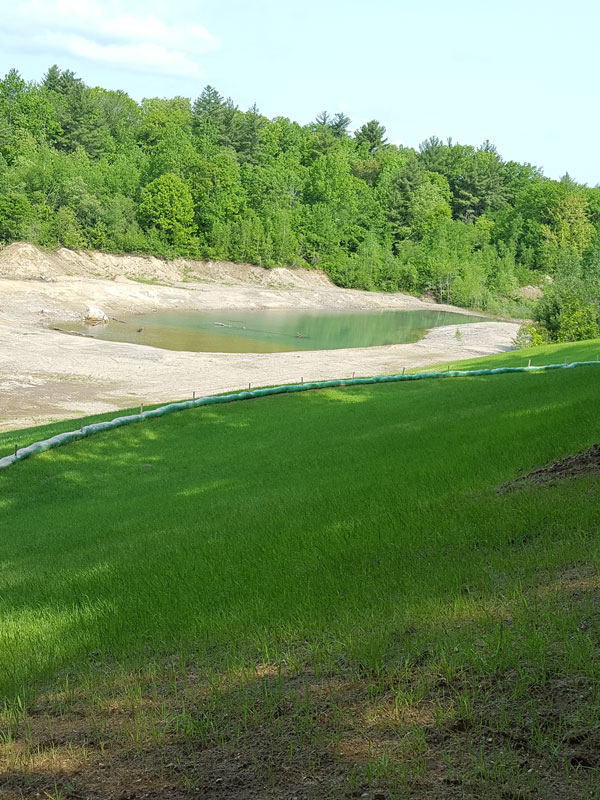Overview
A conservation priority of Brentwood for many years because of its high risk for development, the DeYoung-Fralic property was acquired by SELT in 2017. It consists of 105 acres and 3,700 feet of pristine river frontage along the Exeter River. The site of a former gravel pit that had been closed by Brentwood was restored for wildlife habitat in 2019.
The river frontage provides a valuable water protection area, and includes priority focus areas for local, state, and federally-protected bodies of water. The DeYoung-Fralic Conservation Area also includes areas within the current 100 year floodplain, 150 feet of buffer around majority of wetlands, and an identified high-transmissivity aquifer.
As a wildlife habitat, DeYoung-Fralic Conservation Area is home to a variety of species and connects to other protected lands to create an active wildlife corridor for animals to travel through naturally and safely.

This property is open to explore. At this time, please adhere to signs and do not enter the gravel pit as it is a sensitive wildlife habitat restoration area.
If you go, use hike safe practices. Dress appropriately and know how to use a compass. Current parking is limited. We ask that you kindly do not block the gate and respect abutting landowners and do not block driveways or impede traffic when parking.
Access is located off Ole Gordon Road in Brentwood, NH. Get directions.
Allowed Uses
- Hiking
- Wildlife Observation
- Snowshoeing
- Skiing
- Hunting
- Fishing
Natural & Archaeological Features
- Wetlands
- Beaver pond
- Forests
- Restored gravel pit for wildlife habitat (2019)
History
In 2017, John and Lois DeYoung donated 105 acres to SELT to build upon existing conservation land in Brentwood, creating the DeYoung-Fralic Conservation Area. This conservation area lies within a 2,180 acre unfragmented forest block with high-ranking wildlife habitat.
In 2019, SELT worked to restore the gravel pit to create habitat for endangered, threatened and at-risk species. Guided by a plan developed by the US Natural Resources Conservation Service (NRCS) and with restoration funding from its Wetlands Reserve Easement program, the final plan balanced town needs with the creation of wildlife habitat. The slopes were reduced for public safety, a vernal pool was created, and the land was seeded with two plants for erosion control within this sandy habitat.
SELT now owns the land subject to a conservation easement held by NRCS.
Funding Partners
- John and Lois DeYoung
- Brentwood Conservation Commission
- Natural Resources Conservation Service (NRCS)
Land Conservation Resources
The booklet, Conserving Your Land: Options for New Hampshire Landowners, is a concise and clear guide to possible conservation outcomes for your land. You can request a free copy from SELT, read the booklet online, or download a copy.
Want to Learn More?
If you are considering the conservation of your land, we recommend contacting us to set up a confidential meeting. We will be more than happy to meet with you to discuss your goals, walk your property, and answer your questions. Please contact us.
